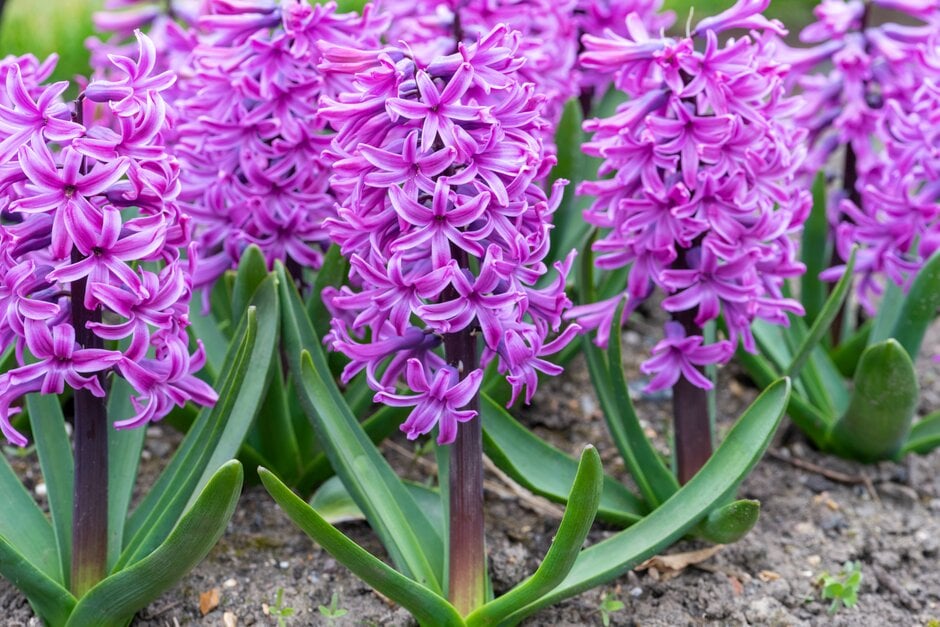Hyacinthus orientalis 'Paul Hermann'
hyacinth 'Paul Hermann'
Quite a tall cultivar with long spikes of purplish-pink flowers which hold their colour well, on green stems flushed dark purple, to 30cm. The erect to semi-erect leaves are glaucous green. Strongly scented
Size
Ultimate height
0.1–0.5 metresTime to ultimate height
1–2 yearsUltimate spread
0–0.1 metreGrowing conditions
Moisture
Moist but well–drained, Well–drainedpH
Acid, Alkaline, NeutralColour & scent
| Stem | Flower | Foliage | Fruit | |
| Spring | Green Purple | Pink Purple | Blue Green | |
|---|---|---|---|---|
| Summer | ||||
| Autumn | ||||
| Winter |
Position
- Full sun
- Partial shade
Aspect
North–facing or South–facing or West–facing or East–facing
Exposure
Sheltered Hardiness
H4Botanical details
- Family
- Asparagaceae
- Native to GB / Ireland
- No
- Foliage
- Deciduous
- Habit
- Bushy
- Potentially harmful
- Skin irritant, Ornamental bulbs - not to be eaten. Pets: Skin irritant. For further information and contact numbers regarding pets, see the HTA guide to potentially harmful plants
- Genus
Hyacinthus are bulbous perennial with glossy, broadly strap-shaped leaves and fragrant, bell-shaped flowers with recurved petals, borne in loose or dense racemes in spring
- Name status
Accepted
How to grow
Cultivation
Plant 10cm deep in autumn in any moderately fertile, humus-rich, well-drained soil. Protect container grown bulbs from excessive winter wet
Propagation
Propagate by removing offsets when dormant in summer
Suggested planting locations and garden types
- City and courtyard gardens
- Coastal
- Cottage and informal garden
- Gravel garden
- Patio and container plants
- Flower borders and beds
Pruning
No pruning required
Pests
Diseases
Generally disease-free
Love gardening
Sign up to receive regular gardening tips, inspiration, offers and more
View our Privacy Policy
Get involved
The Royal Horticultural Society is the UK’s leading gardening charity. We aim to enrich everyone’s life through plants, and make the UK a greener and more beautiful place.
